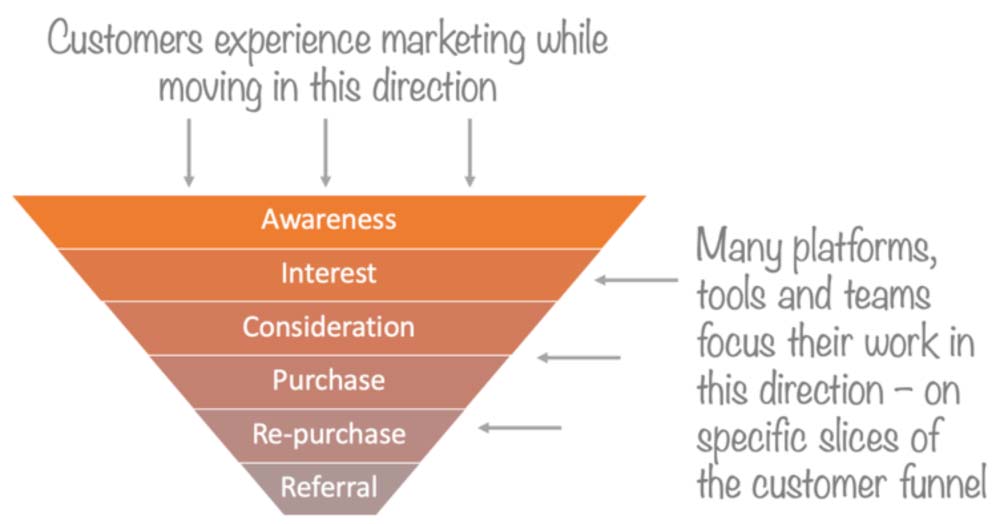Blog
Before scaling up marketing, scale down to one customer
– Nish Bhutani
What is the essence of digital marketing? With its use of data and targeting, the digital marketing aspiration is to engage an individual customer with exactly the right communication for his or her needs, at the current stage of their buying journey.
It is surprising, however, how often one sees examples of well established companies not coming close to living up to this promise.
Breakdowns in communication at Jaguar and Lexus
Let’s look at an example.
1. The user searches Google for “most comfortable luxury sedan”.

2. In response, the Jaguar ad does not mention comfort at all, and leads with price instead. A luxury brand leading a benefits-focused customer to think about price!
3. The Lexus ad is much better with its focus on comfort.
4. But upon clicking over to the Lexus website, the focus on comfort is abandoned for a completely different communication.

The curse of sophistication
With state-of-the-art platforms and tools for targeting and communication, and vast resources, how is this even possible at these large companies?
The problem lies, at least partly, in the tools themselves and their sophistication, and the highly specialised employees that use them. Digital marketing has increased dramatically in complexity, and the tools and skill sets to administer it can take focus away from the essence of why it is used in the first place.
Each new marketing platform or tool, with its fancy knobs, dials and instruments, is a massive generator of to-do lists, and a giant sucking force for the marketer’s attention. That is not a bad thing per se, as many tools and platforms can drive tremendous business value. But when that extra attention comes at the expense of customer experience, marketing programmes run into trouble.
Funnely enough…
Companies in the digital marketing industry have developed platforms and tools that, for the most part, specialise in narrow slices of the customer funnel. The marketer’s main job however, is to ensure that the customer’s experience makes sense as he moves through the funnel.

Dive too deep into a single slice, and you can stop looking at things from the customer’s perspective. And from the point of view of an individual customer, whether their experience is generated by a massively automated and complex system, or put together by hand, makes absolutely no difference to them. They just want it to be relevant.
A test for your own marketing team, is to ask them about priorities. If the answers sound too much like ‘install XYZ tool’, and ‘upgrade to using ABC platform’, and not enough like ‘optimise the ROI of a key segment’ or ‘improve the user experience at a particular point in the funnel’, consider it a warning sign that your team is fiddling with too many machine knobs, and not thinking enough about real people.
That would be a good time to remind them that sometimes you need to scale down to make things work at the level of individual customers and segments, before you scale up with shiny new systems that deal in large numbers.
About The Author
Credits: Nish Bhutani is Founder & CEO of Indiginus, a digital growth consultancy headquartered in Mumbai



